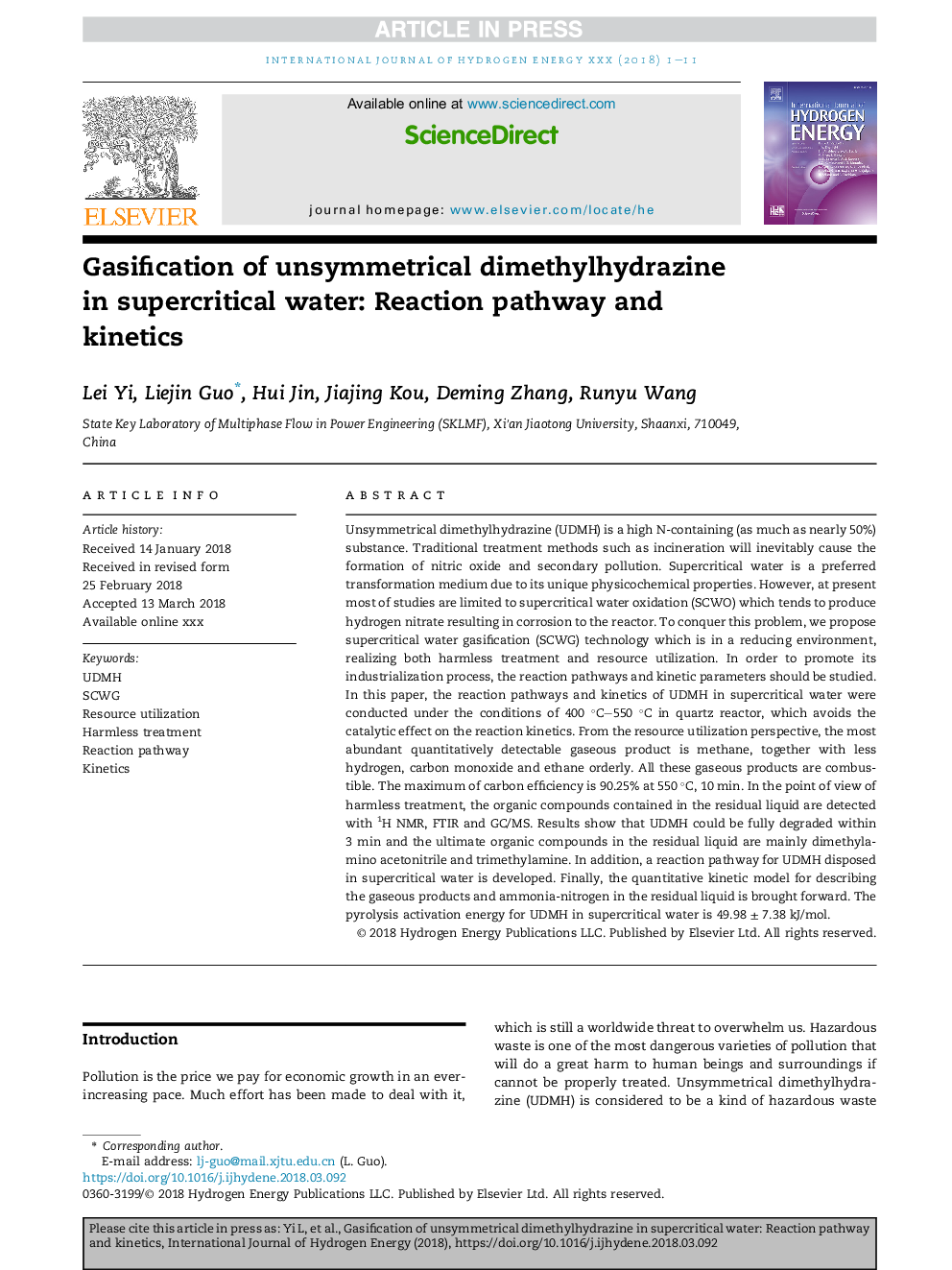| Article ID | Journal | Published Year | Pages | File Type |
|---|---|---|---|---|
| 7706176 | International Journal of Hydrogen Energy | 2018 | 11 Pages |
Abstract
Unsymmetrical dimethylhydrazine (UDMH) is a high N-containing (as much as nearly 50%) substance. Traditional treatment methods such as incineration will inevitably cause the formation of nitric oxide and secondary pollution. Supercritical water is a preferred transformation medium due to its unique physicochemical properties. However, at present most of studies are limited to supercritical water oxidation (SCWO) which tends to produce hydrogen nitrate resulting in corrosion to the reactor. To conquer this problem, we propose supercritical water gasification (SCWG) technology which is in a reducing environment, realizing both harmless treatment and resource utilization. In order to promote its industrialization process, the reaction pathways and kinetic parameters should be studied. In this paper, the reaction pathways and kinetics of UDMH in supercritical water were conducted under the conditions of 400 °C-550 °C in quartz reactor, which avoids the catalytic effect on the reaction kinetics. From the resource utilization perspective, the most abundant quantitatively detectable gaseous product is methane, together with less hydrogen, carbon monoxide and ethane orderly. All these gaseous products are combustible. The maximum of carbon efficiency is 90.25% at 550 °C, 10 min. In the point of view of harmless treatment, the organic compounds contained in the residual liquid are detected with 1H NMR, FTIR and GC/MS. Results show that UDMH could be fully degraded within 3 min and the ultimate organic compounds in the residual liquid are mainly dimethylamino acetonitrile and trimethylamine. In addition, a reaction pathway for UDMH disposed in supercritical water is developed. Finally, the quantitative kinetic model for describing the gaseous products and ammonia-nitrogen in the residual liquid is brought forward. The pyrolysis activation energy for UDMH in supercritical water is 49.98 ± 7.38 kJ/mol.
Related Topics
Physical Sciences and Engineering
Chemistry
Electrochemistry
Authors
Lei Yi, Liejin Guo, Hui Jin, Jiajing Kou, Deming Zhang, Runyu Wang,
